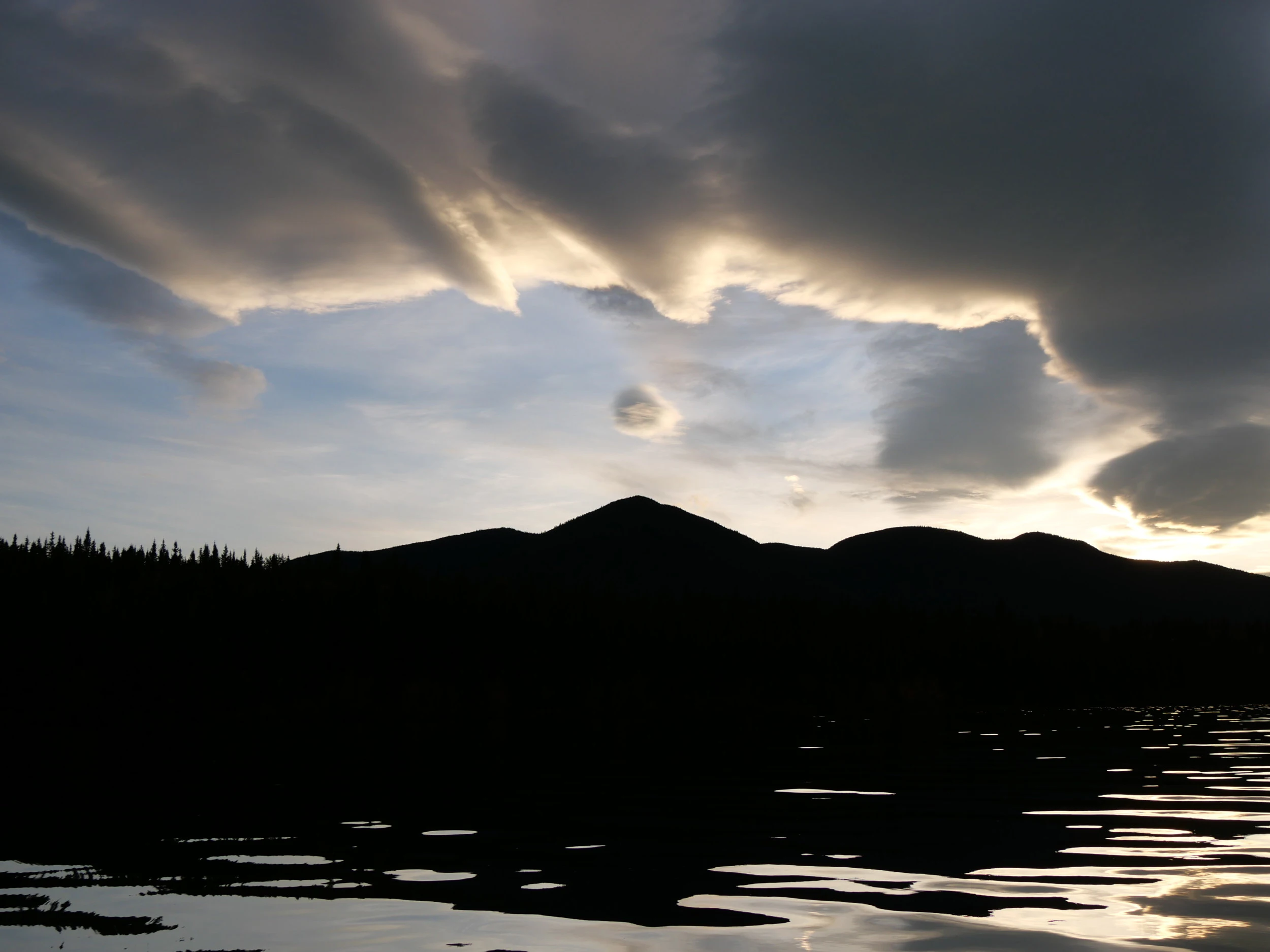I have been challenged to explain how my beautiful observations can be economically viable. This one in particular, this beautiful rock melting the snow away.
Well, there are many dimensions to economic viability. For starters, my small urban area of 80,000 people currently draws water from an upland area that could support a vigorous cool-climate agricultural industry, a forest industry and a wild-crafting industry. Here is some Labrador tea doing just fine.

What’s more, it has a value. Google says so:

$400 per kilogram is not a bad price. But, aside from that it’s not really that hard to imagine hundreds of crops growing here at 3800 feet, because, for one, there are many areas of Canada with thriving agricultural regimes at that altitude, and for another the climate is better than the Black Forest, Iceland, Switzerland, and many other places in which the land is intensively farmed. Here, however, the limiting factor is water, and water is very expensive to transport into the valley bottom. In fact, in my small urban area of 80,000 people, the current projected bill for upgrading water delivery is $100,000,000. When you consider that half of the water (half is not an exaggeration) evaporates away in these rain shadow deeps, that is, effectively, $50,000,000 of lost value. Pretty much anything we do is going to be better than that. These rocks below are melting it in place.
That is value, because this image is taken on agricultural land, or at least land that was agricultural before it was alienated to form an inefficient irrigation canal and then alienated further to create a subdivision to house people retiring from Greater Canada, each of whom increases the water load on the land. The thing is, there is water on the land, but by midsummer it has all gone. In fact, by mid-spring the land surface is dry. This dryness is used as an argument for the economic non-viability of the land, which increases housing development, which increases the concentration of water in the hands of wealthy people, which decreases the availability of water for food growing. The thing is, though, that there are 28 inches of water falling on this land each year, most of which flows away, much of it into Okanagan Lake.

The flood events that come from sudden spring run off, create a public safety bill of $12,000,000, just in Greater Kelowna. Read about it on Castanet here.

That’s economic unsustainability. So, it is certainly economically and environmentally sustainable to stop transporting water into wasteful environments, and it is certainly an expensive waste to let the water all run away at once. It is also ethically questionable to do both, given how the processes create a class system around water. That is actually more than normally problematic in this environment, because this is all stolen land and stolen water, and its original owners have the right under the laws of the Government of Canada to assert their rights to mutual governance of that land and primary rights to the water. I am in full support. I am also in full support of acting proactively, to prevent critical problems before they explode and get very expensive and perhaps poisonous. Hence, a simple idea: a rock.
 Rocks are low tech, and they are durable. They melt snow and soil, and slowly combine them in repeated cycles that reduce runoff, and they gather rain in the summer and bird faeces all year long to nourish bushes. Producing berry bushes like this:
Rocks are low tech, and they are durable. They melt snow and soil, and slowly combine them in repeated cycles that reduce runoff, and they gather rain in the summer and bird faeces all year long to nourish bushes. Producing berry bushes like this:

Last time, I checked, dried berries are going for $25 a pound. Raisins are $5 a pound. We don’t grow them here. Our land and our water are too expensive, and our sun is too fragile. We can, however, grow saskatoons, on unused land, supporting an indigenous food crop and indigenous forms of land use and understanding. Are we farming like this now? No. There are solid economic reasons why not, but they have a lot to do with rules surrounding land ownership, property access, non-wildlife zones near human housing, and, the big one, the desire to keep all the water. The beautiful thing about wringing water from rocks…

… or for a land management strategy making use of the abilities of rocks is that it is there to sustain us when those issues of land ownership, property access and notions of wild or farmed land change under economic, social, political, industrial or military pressure. Is it economically sustainable to throw a bunch of rocks around and live off of them? No. Can we use them, and a hundred other natural process like them, to unite our society across its very real divides and to provide resiliency for the future? Yes. Now, there was one more factor to this question of economic viability. It was Elon Musk. This American man…

… says this on the Guardian: https://www.theguardian.com/technology/2017/feb/15/elon-musk-cyborgs-robots-artificial-intelligence-is-he-right
If humans want to continue to add value to the economy, they must augment their capabilities through a “merger of biological intelligence and machine intelligence”. If we fail to do this, we’ll risk becoming “house cats” to artificial intelligence.
And so we enter the realm of brain-computer (or brain-machine) interfaces, which cut out sluggish communication middlemen such as typing and talking in favour of direct, lag-free interactions between our brains and external devices.
To which I can only add tonight: if humans want to continue to add value to the earth, they must augment their capabilities through a “merger of biological intelligence and environmental intelligence”. If we fail to do this, we’ll risk becoming “house cats” to Elon Musk. It is a very real risk, but it is not an economic risk, so much as an existential risk which has the danger of becoming a military one. Part of the answer is not to “enter the realm of brain-computer interfaces,” but to go where the machines can’t. The time to develop existential resiliency is now, not ten years from now. And so, unabashedly, a rock.

With full apologies that every post hasn’t garnered this level of detail these last six months. And that leads to a personal explanation of my recent concentration on beauty rather than the practical goals at the heart of this project: I have been finishing off a manuscript that lays down, through explorations of balance, which is an ancient definition of beauty, sixty years of journeying towards an understanding of the earth that can underly this practical work. I have used the blog, as I always have, to conduct the explorations to support my arguments. On that framework I am ready to start assembling the practical posts from this blog into useful collections. Will it change the world? No, Elon Musk will do that, under the paternalistic guise of protecting us from a mechanized world. He is absolutely right that it is our job to change our selves. We’d better get started.
Categories: Earth, Erosion, Ethics, First Peoples, Grasslands, green technology, Industry, Innovation, invasive species, Land, Land Development, landscaping, Nature Photography, Other People, Soil, Spirit, Urban Okanagan, Water














Thank you for replying to my thoughts on Elon Musk and economic viability both in your response to my comment on yesterday’s post and in your post today. Both have challenged me to think carefully about these challenges.
I must begin by saying that I did not intend to praise Musk, or bury him either for that matter(!), but to ask in what way his challenge regarding human economic viability relates to your rich meditations on fruitfulness in your valley. When I first read the piece in The Guardian that you cite
in your post today I was reminded of a lecture that was given by Ray Kurzweil, Director of Engineering at Google, in which he spoke of the possibility of human immortality by digital means. He was clearly excited by the possibility declaring that he believed if he could live until the 2030s he might achieve his own immortality. Clearly this is an ongoing conversation in the world of Silicon Valley. Now what kind of space is that? A living ecosystem in which human beings are a part or a virtual space in which, as you expressed about your own valley, humans already think in a cyborgian way about their environment?
I think that you are right in saying that the time to grapple with these questions is now. I tend to agree with the philosopher, John Gray, who argues that we are only capable of thinking of immortality in terms of our current levels of consciousness and maturity. As you noted our understanding of the cyborg is class determined. The problems that robotics are asked to solve are those posed by the super-rich. How can this process become more efficient? How can this profit margin be expanded? How can I become wealthier? How can I enjoy my ever expanding wealth for longer, perhaps even for ever?
It seems to me that we are faced with the fundamental question of what it means to be human and, intimately connected to this, what it means to be fully human. The way in which we are drifting into a cyborgian state because we simply want our egoic wants satisfied and do not know, or even want to know that there is a deeper level of maturity means that I fear we have few inner resources for resistance to this drift. Is the only hope for us that our hubristic challenge to the gods will inevitably be met by a nemesis that will cast us into the darkness?
LikeLike
Thank you, Harold, for the extended reply to questions and challenges. “Rock” is not so weird as people may think. I used to take my little bull on a rope and lead him through the snow to ant hills which provide the early green grass. Rocks do the same thing. And bulls excrete.
LikeLike
Way to go, bulls!
>
LikeLike
That “house cats to Elon Musk” line is about the best thing I’ve read in years!
This post made me think of the technoscience critic Donna Haraway, who began with “The Cyborg manifesto” in the 80s, and moved to “The Companion Species Manifesto” a decade later, making a very similar move to what I see in this excellent post. Haraway’s latest attempts to get beyond the so-called “anthropocene era,” invoking what she calls the “Chthulucene” which brings the planet-devouring forces fully into the, er, community.
LikeLiked by 1 person
Thanks for the tips! I shall look Haraway up.
>
LikeLiked by 1 person
I’m just very glad you’re doing what you’re’ doing, and I think you may be way ahead of your time, but that is a tragedy, isn’t it?
LikeLike
Ha, kind of weird, really. 🙂
It was about ten years ago that I realized that my task was to lay down maps for people to find in the future. Of course, it helps to try to create the future which has footsteps leading to the maps.
That’s enough to keep my mind in knots.
I feel great things coming this year, though. The foundation for a jump forward seem to be solid.
>
LikeLiked by 1 person